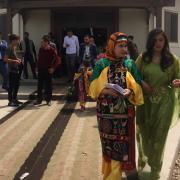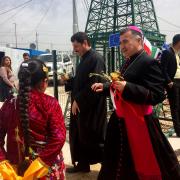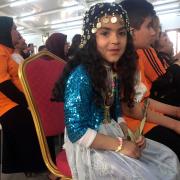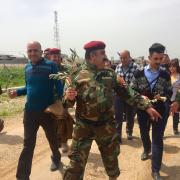ASHTY REFUGEE CAMP, Northern Iraq — “On this Palm Sunday, we thank God for liberating our villages from the Islamic State,” Father Youssef says in Arabic, addressing a small congregation in the Ashty Camp in Northern Iraq. Many of those gathered are Christians from the villages surrounding Mosul who have lived in the camp since the Islamic State (ISIS) captured their villages and drove them out two and a half years ago.
Now, their villages are finally liberated. For the first time in almost three years it is possible to return.
“We hope that this Holy Week, we will rise again,” Father Youssef continues. “We pray that peace comes, once again, to our lands."
To mark this particularly special Palm Sunday — the first since ISIS was defeated in the area — many assembled today will march 80 miles, from the camp to the village of Qarqosh, one of the largest traditionally Christian villages in Iraq. Some are originally from there, while others are marching in solidarity.
The march will stretch from the city of Erbil, to the Nineveh plain — across part of Iraqi-Kurdistan, and into Iraq, taking a total of at least five days.
As the congregation prepares for the march, prayers for peace are on everyone’s lips. Instead of taking communion, the priest invites anyone who wishes to take a single olive branch, symbolizing the peace that they hope comes back to the Christian community, now that the Islamic State has been defeated.
img_8652.jpg
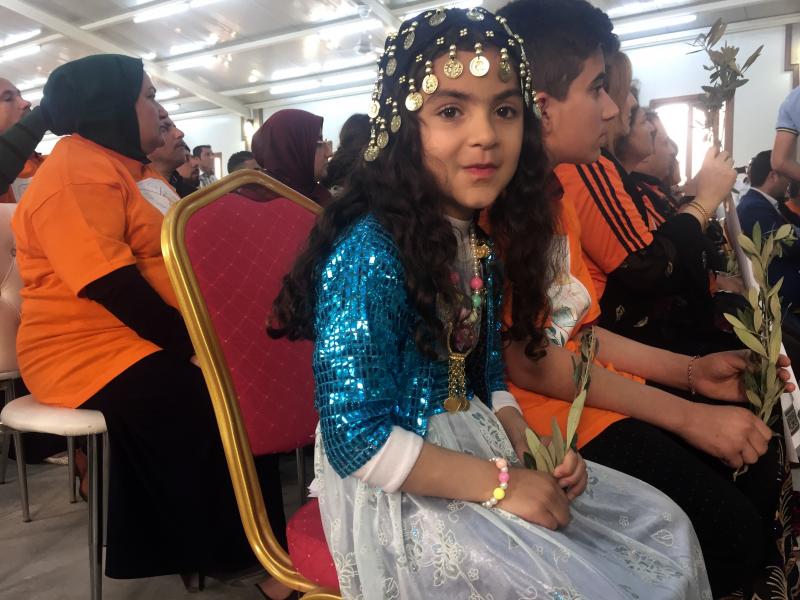
Amin Noel Adel Kalo, a priest and manager of the Ashty Refugee Camp participates in the ritual, making the sign of the cross before pressing the olive branch to his heart.
“I am happy to see this march happening, and giving new hope to our Christian community,” he told Sojourners. “ISIS took so much from us — I’m hoping that this time we really, finally, have a chance for peace."
Iraq has one of the largest Christian community in the Middle East, many of which were concentrated in the cities of Baghdad and Mosul, both of which were known for their religious diversity. All of this changed with the U.S. invasion of Iraq in 2003, when Islamic fundamentalists targeted Christian communities across the country with a series of terrorist attacks in churches. The attacks forced many to flee to traditionally Christian villages in the Nineveh plains on the outskirts of Mosul.
In 2014, it only became worse: The Islamic State stormed Mosul, and its surrounding Christian safe havens, arresting and brutally executing religious minorities. Men were tortured and killed if they didn’t convert to Islam. Women were captured and often raped or forced into sexual slavery.
img_8687.jpg
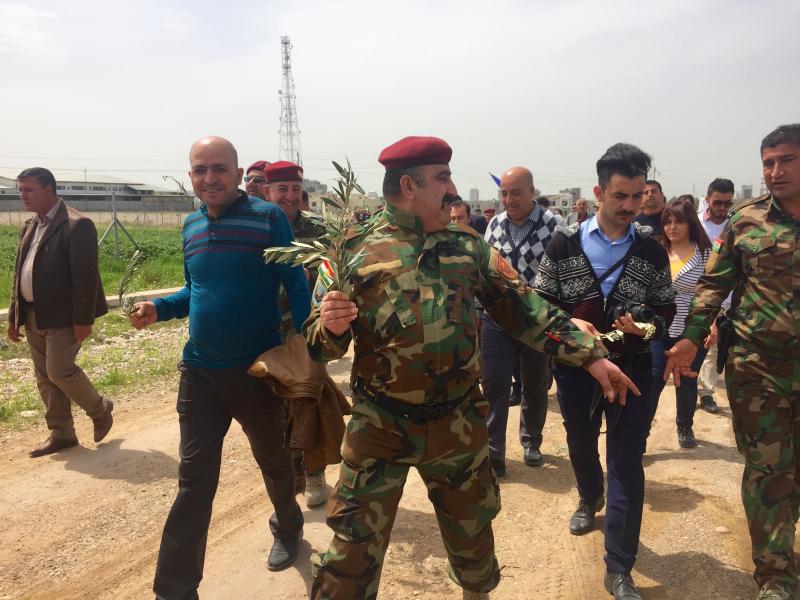
Christians had three choices: Convert to Islam, flee their ancestral lands, or risk certain death.
As of 2017, many who haven’t fled the country altogether are living in refugee camps like the Ashty camp in Erbil, often protected by local Christian organizations. But over the years, many have opted to leave Iraq. The number of Christians in the country has dwindled from 1.4 million before the 2003 U.S. invasion, to estimates of only 250,000, half of whom are now in Kurdish-controlled areas.
“It’s difficult seeing our people who once lived in nice homes in beautiful villages living in cramped caravans,” Amin Noel Adel Kalo continues, looking around the camp which — at a capacity of 5,000 — houses a modest number of refugees. “ISIS looted their villages, and took everything from them. Now they’re struggling to live in dignity.”
Those who organized the march, and other Iraqi Christian leaders, are encouraging the Christian community to return to their homes in their ancestral lands. But places like Bartella, Bashiqa, and Qaraqosh are now largely ghost towns covered in rubble. Many people displaced by the brutality of the Islamic State are now wondering if they will ever be able to return home.
“Of course I’m grateful for the hospitality we have received in this camp, but it isn’t anything like Qaraqosh,” Samira, a mother of five who has lived in the camp for the past two and a half years, told Sojourners. Like many, Samira has been informed by her sons, who returned to the village when it was liberated, that their home had been destroyed by the fighting.
“I wish I could join the march, and live in Qaraqosh again,” she continued. “It’s the most beautiful place in the world — but without our home it wouldn’t be the same."
Her youngest daughter, Mariam, shyly hid behind her.
“I know I won’t be able to go back to where we come from,” Mariam said. “Our house is destroyed, and it will be a long time before anything is rebuilt.”
She looked up at Samira, smiling down at her, and smiled back without a hint of her mother’s sadness in her eye.
“Instead I want to grow up, and become a lawyer,” Mariam said. “I want to get justice for what happened to us."
Got something to say about what you're reading? We value your feedback!



